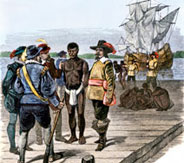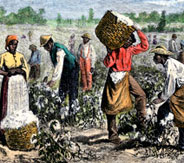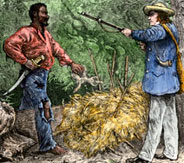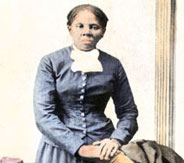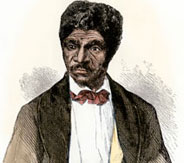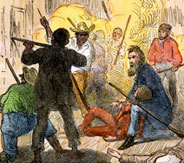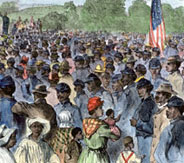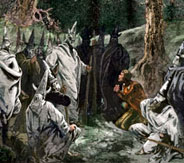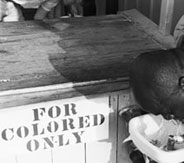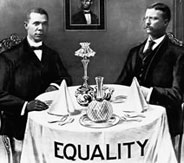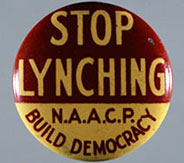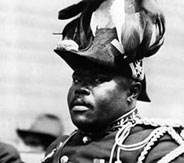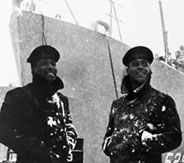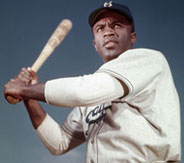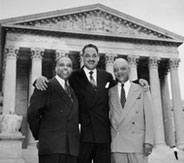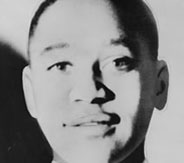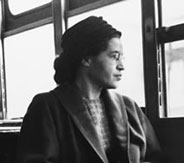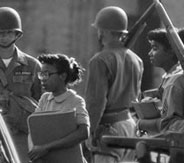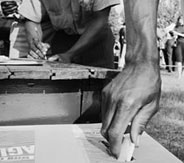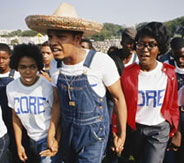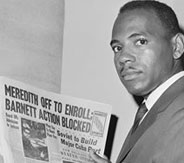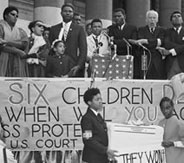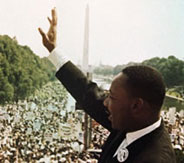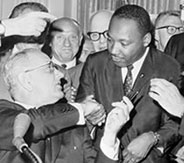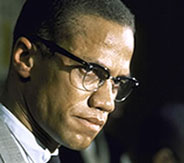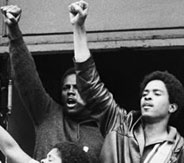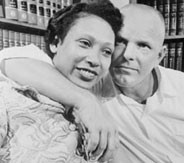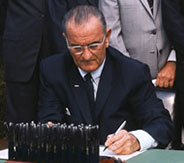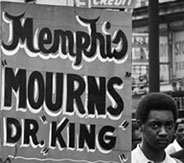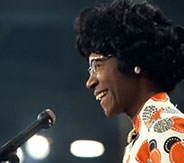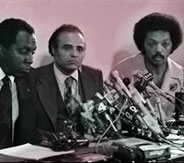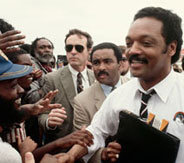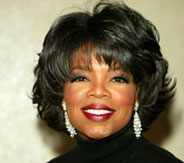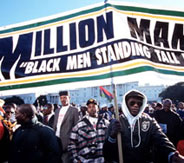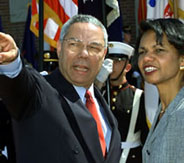Slavery comes to North America, 1619
To satisfy the labor needs of the rapidly growing North American colonies, white European settlers turned in the early 17th century from indentured servants (mostly poorer Europeans) to a cheaper, more plentiful labor source: African slaves. Beginning around 1619, when a Dutch ship brought 20 Africans ashore at the British colony of Jamestown, Virginia, slavery spread quickly through the American colonies. Though it is impossible to give accurate figures, some historians have estimated that 6 to 7 million slaves were imported to the New World during the 18th century alone, depriving the African continent of its most valuable resource–its healthiest and ablest men and women.
After the American Revolution, many colonists (particularly in the North, where slavery was relatively unimportant to the economy) began to link the oppression of black slaves to their own oppression by the British. Though leaders such as George Washington and Thomas Jefferson–both slaveholders from Virginiatook cautious steps towards limiting slavery in the newly independent nation, the Constitution tacitly acknowledged the institution, guaranteeing the right to repossess any “person held to service or labor" (an obvious euphemism for slavery). Many northern states had abolished slavery by the end of the 18th century, but the institution was absolutely vital to the South, where blacks constituted a large minority of the population and the economy relied on the production of crops like tobacco and cotton. Congress outlawed the import of new slaves in 1808, but the slave population in the U.S. nearly tripled over the next 50 years, and by 1860 it had reached nearly 4 million, with more than half living in the cotton-producing states of the South.
Rise of the cotton industry, 1793
In the years immediately following the Revolutionary War, the rural South–the region where slavery had taken the strongest hold in North America–faced an economic crisis. The soil used to grow tobacco, then the leading cash crop, was exhausted, while products such as rice and indigo failed to generate much profit. As a result, the price of slaves was dropping, and the continued growth of slavery seemed in doubt. Around the same time, the mechanization of spinning and weaving had revolutionized the textile industry in England, and the demand for American cotton soon became insatiable. Production was limited, however, by the laborious process of removing the seeds from raw cotton fibers, which had to be completed by hand. In 1793, a young Yankee schoolteacher named Eli Whitney came up with a solution to the problem: The cotton gin, a simple mechanized device that efficiently removed the seeds, could be hand-powered or, on a large scale, harnessed to a horse or powered by water. The cotton gin was widely copied, and within a few years the South would transition from a dependence on the cultivation of tobacco to that of cotton. As the growth of the cotton industry led inexorably to an increased demand for black slaves, the prospect of slave rebellion–such as the one that triumphed in Haiti in 1791–drove slaveholders to make increased efforts to protect their property rights. Also in 1793, Congress passed the Fugitive Slave Act, which made it a federal crime to assist a slave trying to escape. Though it was difficult to enforce from state to state, especially with the growth of abolitionist feeling in the North, the law helped enshrine and legitimize slavery as an enduring American institution.
Nat Turner's Revolt, August 1831
In August 1831, Nat Turner struck fear into the hearts of white Southerners by leading the only effective slave rebellion in U.S. history. Born on a small plantation in Southampton County, Virginia, Turner inherited a passionate hatred of slavery from his African-born mother and came to see himself as anointed by God to lead his people out of bondage. In early 1831, Turner took a solar eclipse as a sign that the time for revolution was near, and on the night of August 21, he and a small band of followers murdered his owners, the Travis family, and set off toward the town of Jerusalem, where they planned to capture an armory and gather more recruits. The group, which eventually numbered around 75 blacks, murdered some 60 whites in two days before armed resistance from local whites and the arrival of state militia forces overwhelmed them just outside Jerusalem. Some 100 slaves, including innocent bystanders, lost their lives in the struggle. Turner escaped and spent six weeks on the lamb before he was captured, tried and hanged.
Oft-exaggerated reports of the insurrection–some said that hundreds of whites had been killed–sparked a wave of anxiety across the South. Several states called special emergency sessions of the legislature, and most strengthened their slave codes in order to limit the education, movement and assembly of slaves. While supporters of slavery pointed to the Turner rebellion as evidence that blacks were inherently inferior barbarians requiring an institution such as slavery to discipline them, the increased repression of southern blacks would strengthen anti-slavery feeling in the North through the 1860s amd intensify the regional tensions building toward civil war.
Abolitionism and the Underground Railroad, 1831
The early abolition movement in North America was fueled both by slaves' efforts to liberate themselves and by groups of white settlers, such as the Quakers, who opposed slavery on religious or moral grounds. Though the lofty ideals of the Revolutionary era invigorated the movement, by the late 1780s it was in decline, as the growing southern cotton industry made slavery an ever more vital part of the national economy. In the early 19th century, however, a new brand of radical abolitionism emerged in the North, partly in reaction to Congress' passage of the Fugitive Slave Act of 1793 and the tightening of slave codes in most southern states. One of its most eloquent voices was William Lloyd Garrison, a crusading journalist from Massachusetts, who founded the abolitionist newspaper The Liberator in 1831 and became known as the most radical of America's antislavery activists. Antislavery northerners–many of them free blacks–had begun helping fugitive slaves escape from southern plantations to the North via a loose network of safe houses as early as the 1780s. Known as the Underground Railroad, the organization gained real momentum in the 1830s and eventually helped anywhere from 40,000 to 100,000 slaves reach freedom. Harriet Tubman, its most celebrated –conductor," was a former slave who married a free black man and escaped from Maryland to Philadelphia in 1849. On numerous risky trips south, she helped some 300 other slaves escape before serving as a scout and spy for Union forces in South Carolina during the Civil War. The success of the Underground Railroad helped spread abolitionist feelings in the North; it also undoubtedly increased sectional tensions, convincing pro-slavery southerners of their northern countrymen's determination to defeat the institution that sustained them.
Dred Scott case, March 6, 1857
On March 6, 1857, the U.S. Supreme Court handed down its decision in Scott v. Sanford, delivering a resounding victory to southern supporters of slavery and arousing the ire of northern abolitionists. During the 1830s, the owner of a slave named Dred Scott had taken him from the slave state of Missouri to the Wisconsin territory and Illinois, where slavery was outlawed, according to the terms of the Missouri Compromise of 1820. Upon his return to Missouri, Scott sued for his freedom on the basis that his temporary removal to free soil had made him legally free. The case went to the Supreme Court, where Chief Justice Roger B. Taney and the majority eventually ruled that Scott was a slave and not a citizen, and thus had no legal rights to sue. According to the Court, Congress had no constitutional power to deprive persons of their property rights when dealing with slaves in the territories. The verdict effectively declared the Missouri Compromise unconstitutional, ruling that all territories were open to slavery and could exclude it only when they became states. While much of the South rejoiced, seeing the verdict as a clear victory for the slave system, antislavery northerners were furious. One of the most prominent abolitionists, Frederick Douglass, was cautiously optimistic, however, wisely predicting that –This very attempt to blot out forever the hopes of an enslaved people may be one necessary link in the chain of events preparatory to the complete overthrow of the whole slave system.
John Brown's raid, October 16, 1859
A native of Connecticut, John Brown struggled to support his large family and moved restlessly from state to state throughout his life, becoming a passionate opponent of slavery along the way. After assisting in the Underground Railroad out of Missouri and engaging in the bloody struggle between pro- and anti-slavery forces in Kansas in the 1850s, Brown grew anxious to strike a more extreme blow for the cause. On the night of October 16, 1859, he led a small band of less than 50 men in a raid against the federal arsenal at Harper's Ferry, Virginia. Their aim was to capture enough ammunition to lead a large operation against Virginia's slaveholders. Brown's men, including several blacks, captured and held the arsenal until federal and state governments sent troops and were able to overpower them.
John Brown was hanged on December 2, 1859; his trial riveted the nation, and he emerged as an eloquent voice against the injustice of slavery and a martyr to the abolitionist cause. Just as Brown's courage turned thousands of previously indifferent northerners against slavery, his violent actions convinced slave owners in the South beyond doubt that abolitionists would go to any lengths to destroy the –peculiar institution." Rumors spread of other planned insurrections, and the South reverted to a semi-war status. Only the election of the anti-slavery Republican Abraham Lincoln as president in 1860 remained before the southern states would begin severing ties with the Union, sparking the bloodiest conflict in American history.
Civil War and emancipation, 1861
In the spring of 1861, the bitter sectional conflicts that had been intensifying between North and South over the course of four decades erupted into civil war, with 11 southern states seceding from the Union and forming the Confederate States of America. Though President Abraham Lincoln's antislavery views were well established, and his election as the nation's first Republican president had been the catalyst that pushed the first southern states to secede in late 1860, the Civil War at its outset was not a war to abolish slavery. Lincoln sought first and foremost to preserve the Union, and he knew that few people even in the North–let alone the border slave states still loyal to Washington–would have supported a war against slavery in 1861. By the summer of 1862, however, Lincoln had come to believe he could not avoid the slavery question much longer. Five days after the bloody Union victory at Antietam in September, he issued a preliminary emancipation proclamation; on January 1, 1863, he made it official that –slaves within any State, or designated part of a State&in rebellion,&shall be then, thenceforward, and forever free." Lincoln justified his decision as a wartime measure, and as such he did not go so far as to free the slaves in the border states loyal to the Union, an omission that angered many abolitionists. By freeing some 3 million black slaves in the rebel states, the Emancipation Proclamation deprived the Confederacy of the bulk of its labor forces and put international public opinion strongly on the Union side. Some 186,000 black soldiers would join the Union Army by the time the war ended in 1865, and 38,000 lost their lives. The total number of dead at war's end was 620,000 (out of a population of some 35 million), making it the costliest conflict in American history.
The Post-Slavery South, 1865
Though the Union victory in the Civil War gave some 4 million slaves their freedom, significant challenges awaited during the Reconstruction period. The 13th Amendment, adopted late in 1865, officially abolished slavery, but the question of freed blacks' status in the post-war South remained. As white southerners gradually reestablished civil authority in the former Confederate states in 1865 and 1866, they enacted a series of laws known as the black codes, which were designed to restrict freed blacks' activity and ensure their availability as a labor force. Impatient with the leniency shown toward the former Confederate states by Andrew Johnson, who became president after Lincoln's assassination in April 1865, so-called Radical Republicans in Congress overrode Johnson's veto and passed the Reconstruction Act of 1867, which basically placed the South under martial law. The following year, the 14th Amendment broadened the definition of citizenship, granting –equal protection" of the Constitution to former slaves. Congress required southern states to ratify the 14th Amendment and enact universal male suffrage before they could rejoin the Union, and the state constitutions during those years were the most progressive in the region's history.
The 15th Amendment, adopted in 1870, guaranteed that a citizen's right to vote would not be denied –on account of race, color, or previous condition of servitude." During Reconstruction, blacks won election to southern state governments and even to the U.S. Congress. Their growing influence greatly dismayed many white southerners, who felt control slipping ever further away from them. The white protective societies that arose during this period–the largest of which was the Ku Klux Klan (KKK)–sought to disenfranchise blacks by using voter fraud and intimidation as well as more extreme violence. By 1877, when the last federal soldiers left the South and Reconstruction drew to a close, blacks had seen dishearteningly little improvement in their economic and social status, and what political gains they had made had been wiped away by the vigorous efforts of white supremacist forces throughout the region.
"Separate But Equal", 1896
As Reconstruction drew to a close and the forces of white supremacy regained control from carpetbaggers (northerners who moved South) and freed blacks, Southern state legislatures began enacting the first segregation laws, known as the –Jim Crow" laws. Taken from a much-copied minstrel routine written by a white actor who performed often in blackface, the name –Jim Crow" came to serve as a general derogatory term for African Americans in the post-Reconstruction South. By 1885, most southern states had laws requiring separate schools for blacks and whites, and by 1900, –persons of color" were required to be separated from whites in railroad cars and depots, hotels, theaters, restaurants, barber shops and other establishments. On May 18, 1896, the U.S. Supreme Court issued its verdict in Plessy vs. Ferguson, a case that represented the first major test of the meaning of the 14th Amendment's provision of full and equal citizenship to African Americans. By an 8-1 majority, the Court upheld a Louisiana law that required the segregation of passengers on railroad cars. By asserting that the equal protection clause was not violated as long as reasonably equal conditions were provided to both groups, the Court established the –separate but equal" doctrine that would thereafter be used for assessing the constitutionality of racial segregation laws. Plessy v. Ferguson stood as the overriding judicial precedent in civil rights cases until 1954, when it was reversed by the Court's verdict in Brown v. Board of Education.
Washington, Carver & Du Bois, 1900
As the 19th century came to an end and segregation took ever-stronger hold in the South, many African Americans saw self-improvement, especially through education, as the single greatest opportunity to escape the indignities they suffered. Many blacks looked to Booker T. Washington, the author of the bestselling Up From Slavery (1900), as an inspiration. As president of Alabama's Tuskegee Normal and Industrial Institute, Washington urged blacks to acquire the kind of industrial or vocational training (such as farming, mechanics and domestic service) that would give them the necessary skills to carve out a niche for themselves in the U.S. economy. George Washington Carver, another former slave and the head of Tuskegee's agriculture department, helped liberate the South from its reliance on cotton by convincing farmers to plant peanuts, soybeans and sweet potatoes in order to rejuvenate the exhausted soil. By 1940, peanuts had become the second cash crop in the South. Like Washington, Carver had little interest in racial politics, and was celebrated by many white Americans as a shining example of a modest, industrious black man. While Washington and Carver represented a philosophy of accommodation to white supremacy, another prominent black educator, the Harvard-trained historian and sociologist W.E.B. Du Bois, became a leading voice in the growing black protest movement during the first half of the 20th century. In his 1903 book Souls of Black Folk, Du Bois spoke strongly against Washington's advocacy of industrial education, which he saw as too narrow and economically focused, and stressed the importance of higher education for African Americans.
NAACP founded, 1909
In June 1905, a group led by the prominent black educator W.E.B. Du Bois met at Niagara Falls, Canada, sparking a new political protest movement to demand civil rights for blacks, in the old spirit of abolitionism. As America's exploding urban population faced shortages of employment and housing, violent hostility towards blacks had increased around the country; lynching, though illegal, was a widespread practice.
A wave of race riots–particularly one in Springfield, Illinois in 1908–lent a sense of urgency to the Niagara Movement and its supporters, who in 1909 joined their agenda with that of a new permanent civil rights organization, the National Association for the Advancement of Colored People (NAACP). Among the NAACP's stated goals were the abolition of all forced segregation, the enforcement of the 14th and 15th Amendments, equal education for blacks and whites and complete enfranchisement of all black men (though proponents of female suffrage were part of the original NAACP, the issue was not mentioned). First established in Chicago, the NAACP had expanded to more than 400 locations by 1921. One of its earliest programs was a crusade against lynching and other lawless acts; those efforts–including a nationwide protest of D.W. Griffiths' silent film Birth of a Nation (1915), which glorified white supremacy and the Ku Klux Klan–would continue into the 1920s, playing a crucial role in drastically reducing the number of lynchings carried out in the United States. Du Bois edited the NAACP's official magazine, The Crisis, from 1910 to 1934, publishing many of the leading voices in African American literature and politics and helping fuel the spread of the Harlem Renaissance in the 1920s.
Marcus Garvey and the UNIA, 1916
Born in Jamaica, the black nationalist leader Marcus Garvey founded his Universal Negro Improvement Association (UNIA) there in 1914; two years later, he brought it to the United States. Garvey appealed to the racial pride of African Americans, exalting blackness as strong and beautiful. As racial prejudice was so ingrained in white civilization, Garvey claimed, it was futile for blacks to appeal to whites' sense of justice and democratic principles. Their only hope, according to him, was to flee America and return to Africa to build a country of their own. After an unsuccessful appeal to the League of Nations to settle a colony in Africa and failed negotiations with Liberia, Garvey announced the formation of the Empire of Africa in 1921, with himself as provisional president. Other African-American leaders, notably W.E.B. Du Bois of the National Association for the Advancement of Colored People (NAACP) criticized Garvey and his "Back to Africa" movement; he was openly contemptuous of them in return. There was no denying the movement's appeal, however: Garvey's boast of 6 million followers in 1923 was probably exaggerated, but even his critics admitted that the UNIA had some 500,000 members. In 1923, the U.S. government successfully prosecuted and convicted Garvey for mail fraud in connection with selling stock in his Black Star Line shipping company. After serving a two-year jail sentence, Garvey was pardoned by President Calvin Coolidge and immediately deported; he died in London in 1940.
Harlem Renaissance, 1920
In the 1920s, the great migration of blacks from the rural South to the urban North sparked an African-American cultural renaissance that took its name from the New York City neighborhood of Harlem but became a widespread movement in cities throughout the North and West. Also known as the Black Renaissance or the New Negro Movement, the Harlem Renaissance marked the first time that mainstream publishers and critics turned their attention seriously to African-American literature, music, art and politics. Blues singer Bessie Smith, pianist Jelly Roll Morton, bandleader Louis Armstrong, composer Duke Ellington, dancer Josephine Baker, and actor Paul Robeson were among the leading entertainment talents of the Harlem Renaissance, while Paul Laurence Dunbar, James Weldon Johnson, Claude McKay, Langston Hughes and Zora Neale Hurston were some of its most eloquent writers. There was a flip side to this greater exposure, however: Emerging black writers relied heavily on white-owned publications and publishing houses, while in Harlem's most famous cabaret, the Cotton Club, the preeminent black entertainers of the day played to exclusively white audiences. In 1926, a controversial bestseller about Harlem life by the white novelist Carl von Vechten exemplified the attitude of many white urban sophisticates, who looked to black culture as a window into a more "primitive" and "vital" way of life. W.E.B. Du Bois, for one, railed against Van Vechten's novel and criticized works by black writers, such as McKay's novel Home to Harlem, that he saw as reinforcing negative stereotypes of blacks. With the onset of the Great Depression, as organizations like the NAACP and the National Urban League switched their focus to the economic and political problems facing blacks, the Harlem Renaissance drew to a close. Its influence had stretched around the world, opening the doors of mainstream culture to black artists and writers.
African-Americans in WWII, 1941
During World War II, many African Americans were ready to fight for what President Franklin D. Roosevelt called the "Four Freedoms"– freedom of speech, freedom of worship, freedom from want and freedom from fear–even while they themselves lacked those freedoms at home. More than 3 million blacks would register for service during the war, with some 500,000 seeing action overseas. According to War Department policy, enlisted blacks and whites were organized into separate units. Frustrated black servicemen were forced to combat racism even as they sought to further U.S. war aims; this became known as the "Double V" strategy, for the two victories they sought to win. The war's first African-American hero emerged from the attack on Pearl Harbor, when Dorie Miller, a young Navy steward on the U.S.S. West Virginia, carried wounded crewmembers to safety and manned a machine gun post, shooting down several Japanese planes. In the spring of 1943, graduates of the first all-black military aviation program, created at the Tuskegee Institute in 1941, headed to North Africa as the 99th Pursuit Squadron. Their commander, Captain Benjamin O. Davis Jr., later became the first African-American general. The Tuskegee Airmen saw combat against German and Italian troops, flew more than 3,000 missions, and served as a great source of pride for many blacks in America. Aside from celebrated accomplishments like these, overall gains were slow, and maintaining high morale among black forces was difficult due to the continued discrimination they faced. In July 1948, President Harry S. Truman finally integrated the U.S. Armed Forces under an executive order mandating that "there shall be equality of treatment and opportunity for all persons in the armed services without regard to race, color, religion or national origin."
Jackie Robinson, 1947
By 1900, the unwritten color line barring blacks from white teams in professional baseball was strictly enforced. Jackie Robinson, a sharecropper's son from Georgia, joined the Kansas City Monarchs of the Negro American League in 1945, after a stint in the U.S. Army (he earned an honorable discharge after facing a court-martial for refusing to move to the back of a segregated bus). His play caught the attention of Branch Rickey, general manager of the Brooklyn Dodgers, who had been considering bringing an end to segregation in baseball. Rickey signed Robinson to a Dodgers farm team that same year and two years later moved him up, making Robinson the first African-American player to play on a major league team. Robinson played his first game with the Dodgers on April 15, 1947; he led the National League in stolen bases that season, earning Rookie of the Year honors. Over the next nine years, Robinson compiled a .311 batting average and led the Dodgers to six league championships and one World Series victory. Despite his success on the field, however, he encountered hostility from both fans and other players. Members of the St. Louis Cardinals even threatened to strike if Robinson played; baseball commissioner Ford Frick settled the question by threatening to suspend any player who went on strike.
After Robinson's historic breakthrough, baseball was steadily integrated, with professional basketball and tennis following suit in 1950. His groundbreaking achievement transcended sports, however: As soon as he signed the contract with Rickey, Robinson became one of the most visible African Americans in the country, and a figure that blacks could look to as a source of pride, inspiration and hope. As his success and fame grew, Robinson began speaking out publicly for black equality. In 1949, he testified before the House Un-American Activities Committee to discuss the appeal of Communism to black Americans, surprising them with a ferocious condemnation of the racial discrimination embodied by the Jim Crow segregation laws of the South: "The white public should start toward real understanding by appreciating that every single Negro who is worth his salt is going to resent any kind of slurs and discrimination because of his race, and he's going to use every bit of intelligence...to stop it..."
Brown v. Board Of Education, May 17, 1954
On May 17, 1954, the U.S. Supreme Court delivered its verdict in Brown v. Board of Education, ruling unanimously that racial segregation in public schools violated the 14th Amendment's mandate of equal protection of the laws of the U.S. Constitution to any person within its jurisdiction. Oliver Brown, the lead plaintiff in the case, was one of almost 200 people from five different states who had joined related NAACP cases brought before the Supreme Court since 1938.
The landmark verdict reversed the "separate but equal" doctrine the Court had established with Plessy v. Ferguson (1896), in which it determined that equal protection was not violated as long as reasonably equal conditions were provided to both groups. In the Brown decision, Chief Justice Earl Warren famously declared that "separate educational facilities are inherently unequal." Though the Court's ruling applied specifically to public schools, it implied that other segregated facilities were also unconstitutional, thus striking a heavy blow to the Jim Crow South. As such, the ruling provoked serious resistance, including a "Southern manifesto" issued by southern congressmen denouncing it. The decision was also difficult to enforce, a fact that became increasingly clear in May 1955 when the Court remanded the case to the courts of origin due to "their proximity to local conditions" and urged "a prompt and reasonable start toward full compliance." Though some southern schools moved towards integration relatively without incident, in other cases–notably in Arkansas and Alabama–enforcing Brown would require federal intervention.
Emmett Till, August 1955
In August 1955, a 14-year-old black boy from Chicago named Emmett Till had recently arrived in Money, Mississippi to visit relatives. While in a grocery store, he allegedly whistled and made a flirtatious remark to the white woman behind the counter, violating the strict racial codes of the Jim Crow South. Three days later, two white men–the woman's husband, Roy Bryant, and his half-brother, J.W. Milam–dragged Till from his great uncle's house in the middle of the night. After beating the boy, they shot him to death and threw his body in the Tallahatchie River. The two men confessed to kidnapping Till but were acquitted of murder charges by an all-white, all-male jury after barely an hour of deliberations. Never brought to justice, Bryant and Milam later shared vivid details of how they killed Till with a journalist for Look magazine, which published their confessions under the headline "The Shocking Story of Approved Killing in Mississippi."
Till's mother held an open-casket funeral for her son in Chicago, hoping to bring public attention to the brutal murder. Thousands of mourners attended, and Jet magazine published a photo of the corpse. International outrage over the crime and the verdict helped fuel the civil rights movement: just three months after Emmett Till's body was found, and a month after a Mississippi grand jury refused to indict Milam and Bryant on kidnapping charges, a city-wide bus boycott in Montgomery, Alabama would begin the movement in earnest.
Rosa Parks and the Montgomery Bus Boycott, December 1955
On December 1, 1955, an African-American woman named Rosa Parks was riding a city bus in Montgomery, Alabama when the driver told her to give up her seat to a white man. Parks refused, and was arrested for violating the city's racial segregation ordinances, which mandated that blacks sit in the back of public buses and give up their seats for white riders if the front seats were full. Parks, a 42-year-old seamstress, was also the secretary of the Montgomery chapter of the NAACP. As she later explained: "I had been pushed as far as I could stand to be pushed&.I had decided that I would have to know once and for all what rights I had as a human being and a citizen." Four days after Parks' arrest, an activist organization called the Montgomery Improvement Association–led by a young pastor named Martin Luther King, Jr.–spearheaded a boycott of the city's municipal bus company. Because African Americans made up some 70 percent of the bus company's riders at the time, and the great majority of Montgomery's black citizens supported the bus boycott, its impact was immediate.
About 90 boycotters, including King, were indicted under a law forbidding conspiracy to obstruct the operation of a business. Found guilty, King immediately appealed the decision. Meanwhile, the boycott stretched on for more than a year, and the bus company struggled to avoid bankruptcy. On November 13, 1956, in Browder v. Gayle, the U.S. Supreme Court upheld a lower court's decision declaring the bus company's segregation seating policy unconstitutional under the equal protection clause of the 14th Amendment. King, called off the boycott on December 20, and Rosa Parks–known as the "mother of the civil rights movement"–would be one of the first to ride the newly desegregated buses.
Central High School integrated, September 1957
Although the Supreme Court declared segregation of public schools illegal in Brown v. Board of Education (1954), the decision was extremely difficult to enforce, as 11 southern states enacted resolutions interfering with, nullifying or protesting school desegregation. In Arkansas, Governor Orval Faubus made resistance to desegregation a central part of his successful 1956 reelection campaign. The following September, after a federal court ordered the desegregation of Central High School, located in the state capital of Little Rock, Faubus called out the Arkansas National Guard to prevent nine African-American students from entering the school. He was later forced to call off the guard, and in the tense standoff that followed, TV cameras captured footage of white mobs converging on the "Little Rock Nine" outside the high school. For millions of viewers throughout the country, the unforgettable images provided a vivid contrast between the angry forces of white supremacy and the quiet, dignified resistance of the African-American students.
After an appeal by the local congressman and mayor of Little Rock to stop the violence, President Dwight D. Eisenhower federalized the state's National Guard and sent 1,000 members of the U.S. Army's 101st Airborne division to enforce the integration of Central High School. The nine black students entered the school under heavily armed guard, marking the first time since Reconstruction that federal troops had provided protection for black Americans against racial violence. Not done fighting, Faubus closed all of Little Rock's high schools in the fall of 1958 rather than permit integration. A federal court struck down this act, and four of the nine students returned, under police protection, after the schools were reopened in 1959.
Sit-in movement and founding of SNCC, 1960
On February 1, 1960, four black students from the Agricultural and Technical College in Greensboro, North Carolina, sat down at the lunch counter in a local branch of Woolworth's and ordered coffee. Refused service due to the counter's whites-only policy, they stayed put until the store closed, then returned the next day with other students. Heavily covered by the news media, the Greensboro sit-ins sparked a movement that spread quickly to college towns throughout the South and into the North, as young blacks and whites engaged in various forms of peaceful protest against segregation in libraries, on beaches, in hotels and other establishments. Though many protesters were arrested for trespassing, disorderly conduct or disturbing the peace, their actions made an immediate impact, forcing Woolworth's–among other establishments–to change their segregationist policies.
To capitalize on the sit-in movement's increasing momentum, the Student Nonviolent Coordinating Committee (SNCC) was founded in Raleigh, North Carolina in April 1960. Over the next few years, SNCC broadened its influence, organizing so-called "Freedom Rides" through the South in 1961 and the historic March on Washington in 1963; it also joined the NAACP in pushing for the passage of the Civil Rights Act of 1964. Later, SNCC would mount an organized resistance to the Vietnam War. As its members faced increased violence, SNCC became more militant, and by the late 1960s it was advocating the "Black Power" philosophy of Stokely Carmichael (SNCC's chairman from 1966-67) and his successor, H. Rap Brown. By the early 1970s, SNCC was effectively disbanded.
CORE and Freedom Rides, May 1961
Founded in 1942 by the civil rights leader James Farmer, the Congress of Racial Equality (CORE) sought to end discrimination and improve race relations through direct action. In its early years, CORE staged a sit-in at a Chicago coffee shop (a precursor to the successful sit-in movement of 1960) and organized a "Journey of Reconciliation," in which a group of blacks and whites rode together on a bus through the upper South in 1947, a year after the U.S. Supreme Court banned segregation in interstate bus travel. In Boynton v. Virginia (1960), the Court extended the earlier ruling to include bus terminals, restrooms and other related facilities, and CORE took action to test the enforcement of that ruling. In May 1961, CORE sent seven African Americans and six whites on a "freedom ride" on two buses from Washington, D.C. Bound for New Orleans, the freedom riders were attacked by angry segregationists outside of Anniston, Alabama, and one bus was even firebombed. Local law enforcement responded, but slowly, and U.S. Attorney General Robert F. Kennedy eventually ordered State Highway Patrol protection for the freedom riders to continue to Montgomery, Alabama, where they again encountered violent resistance. Kennedy sent federal marshals to escort the riders to Jackson, Mississippi, but images of the bloodshed made the worldwide news, and the freedom rides continued. In September, under pressure from CORE and other civil rights organizations, as well as from the attorney general's office, the Interstate Commerce Commission ruled that all passengers on interstate bus carriers should be seated without regard to race and carriers could not mandate segregated terminals.
Integration of Ole Miss, September 1962
By the end of the 1950s, African Americans had begun to be admitted in small numbers to white colleges and universities in the South without too much incident. In 1962, however, a crisis erupted when the state-funded University of Mississippi (known as "Ole Miss") admitted a black man, James Meredith. After nine years in the Air Force, Meredith had studied at the all-black Jackson State College and applied repeatedly to Ole Miss with no success. With the aid of the NAACP, Meredith filed a lawsuit alleging that the university had discriminated against him because of his race. In September 1962, the U.S. Supreme Court ruled in Meredith's favor, but state officials including Governor Ross Barnett vowed to block his admission. When Meredith arrived at Ole Miss under the protection of federal forces including U.S. marshals, a mob of more than 2,000 people formed on the Oxford, Mississippi campus. Two people were killed and close to 200 injured in the ensuing chaos, which ended only after President Kennedy's administration sent some 31,000 troops to restore order. Meredith went on to graduate from Ole Miss in 1963, but the struggle to integrate higher education continued. Later that year, Governor George Wallace blocked the enrollment of a black student at the University of Alabama, pledging to "stand in the schoolhouse door." Though Wallace was eventually forced by the federalized National Guard to integrate the university, he became a prominent symbol of the ongoing resistance to desegregation nearly a decade after Brown v. Board of Education.
Birmingham church bombed, 1963
Despite Martin Luther King Jr.'s inspiring words at the Lincoln Memorial during the historic March on Washington in August 1963, violence against blacks in the segregated South continued to indicate the strength of white resistance to the ideals of justice and racial harmony King espoused. In mid-September, white supremacists bombed the 16th Street Baptist Church in Birmingham, Alabama during Sunday services; four young African-American girls were killed in the explosion. The church bombing was the third in 11 days, after the federal government had ordered the integration of Alabama's school system. Governor George Wallace was a leading foe of desegregation, and Birmingham had one of the strongest and most violent chapters of the Ku Klux Klan. Birmingham had become a leading focus of the civil rights movement by the spring of 1963, when Martin Luther King was arrested there while leading supporters of his Southern Christian Leadership Conference (SCLC) in a nonviolent campaign of demonstrations against segregation. While in jail, King wrote a letter to local white ministers justifying his decision not to call off the demonstrations in the face of continued bloodshed at the hands of local law enforcement officials, led by Birmingham's police commissioner, Eugene "Bull" Connor. "Letter from a Birmingham Jail" was published in the national press even as images of police brutality against protesters in Birmingham--including children being attacked by police dogs and knocked off their feet by fire hoses--sent shock waves around the world, helping to build crucial support for the civil rights movement.
"I Have a Dream", 1963
On August 28, 1963, some 250,000 people–both black and white–participated in the March on Washington for Jobs and Freedom, the largest demonstration in the history of the nation's capital and the most significant display of the civil rights movement's growing strength. After marching from the Washington Monument, the demonstrators gathered near the Lincoln Memorial, where a number of civil rights leaders addressed the crowd, calling for voting rights, equal employment opportunities for blacks and an end to racial segregation. The last leader to appear was the Baptist preacher Martin Luther King Jr. of the Southern Christian Leadership Conference (SCLC), who spoke eloquently of the struggle facing black Americans and the need for continued action and nonviolent resistance. "I have a dream," King intoned, expressing his faith that one day whites and blacks would stand together as equals, and there would be harmony between the races: "I have a dream that my four little children will one day live in a nation where they will not be judged by the color of their skin but by the content of their character." King's improvised sermon continued for nine minutes after the end of his prepared remarks, and his stirring words would be remembered as undoubtedly one of the greatest speeches in American history. At its conclusion, King quoted an "old Negro spiritual: 'Free at last! Free at last! Thank God Almighty, we are free at last!'" King's speech served as a defining moment for the civil rights movement, and he soon emerged as its most prominent figure.
Civil Rights Act of 1964, July 1964
Thanks to the campaign of nonviolent resistance championed by Martin Luther King Jr. beginning in the late 1950s, the civil rights movement had begun to gain serious momentum in the United States by 1960. That year, John F. Kennedy made passage of new civil rights legislation part of his presidential campaign platform; he won more than 70 percent of the African-American vote. Congress was debating Kennedy's civil rights reform bill when he was killed by an assassin's bullet in Dallas, Texas in November 1963. It was left to Lyndon Johnson (not previously known for his support of civil rights) to push the Civil Rights Act--the most far-reaching act of legislation supporting racial equality in American history--through Congress in June 1964. At its most basic level, the act gave the federal government more power to protect citizens against discrimination on the basis of race, religion, sex or national origin. It mandated the desegregation of most public accommodations, including lunch counters, bus depots, parks and swimming pools, and established the Equal Employment Opportunity Commission (EEOC) to ensure equal treatment of minorities in the workplace. The act also guaranteed equal voting rights by removing biased registration requirements and procedures, and authorized the U.S. Office of Education to provide aid to assist with school desegregation. In a televised ceremony on July 2, 1964, Johnson signed the Civil Rights Act into law using 75 pens; he presented one of them to King, who counted it among his most prized possessions.
Freedom Summer and the "Mississippi Burning" murders, June 1964
In the summer of 1964, civil rights organizations including the Congress of Racial Equality (CORE) urged white students from the North to travel to Mississippi, where they helped register black voters and build schools for black children. The organizations believed the participation of white students in the so-called "Freedom Summer" would bring increased visibility to their efforts. The summer had barely begun, however, when three volunteers–Michael Schwerner and Andrew Goodman, both white New Yorkers, and James Chaney, a black Mississippian–disappeared on their way back from investigating the burning of an African-American church by the Ku Klux Klan. After a massive FBI investigation (code-named "Mississippi Burning") their bodies were discovered on August 4 buried in an earthen dam near Philadelphia, in Neshoba County, Mississippi.
Although the culprits in the case–white supremacists who included the county's deputy sheriff–were soon identified, the state made no arrests. The Justice Department eventually indicted 19 men for violating the three volunteers' civil rights (the only charge that would give the federal government jurisdiction over the case) and after a three-year-long legal battle, the men finally went on trial in Jackson, Mississippi. In October 1967, an all-white jury found seven of the defendants guilty and acquitted the other nine. Though the verdict was hailed as a major civil rights victory–it was the first time anyone in Mississippi had been convicted for a crime against a civil rights worker–the judge in the case gave out relatively light sentences, and none of the convicted men served more than six years behind bars.
Selma to Montgomery march, March 1965
In early 1965, Martin Luther King Jr.'s Southern Christian Leadership Conference (SCLC) made Selma, Alabama, the focus of its efforts to register black voters in the South. Alabama's governor, George Wallace, was a notorious opponent of desegregation, and the local county sheriff had led a steadfast opposition to black voter registration drives: Only 2 percent of Selma's eligible black voters had managed to register. In February, an Alabama state trooper shot a young African-American demonstrator in nearby Marion, and the SCLC announced a massive protest march from Selma to the state capital, Montgomery. On March 7, 600 marchers got as far as the Edmund Pettis Bridge outside Selma when they were attacked by state troopers wielding whips, nightsticks and tear gas. The brutal scene was captured on television, enraging many Americans and drawing civil rights and religious leaders of all faiths to Selma in protest. King himself led another attempt on March 9, but turned the marchers around when state troopers again blocked the road; that night, a group of segregationists fatally beat a protester, the young white minister James Reeb. On March 21, after a U.S. district court ordered Alabama to permit the Selma-Montgomery march, some 2,000 marchers set out on the three-day journey, this time protected by U.S. Army troops and Alabama National Guard forces under federal control. "No tide of racism can stop us," King proclaimed from the steps of the state capitol building, addressing the nearly 50,000 supporters–black and white–who met the marchers in Montgomery.
Malcolm X shot to death, February 1965
In 1952, the former Malcolm Little was released from prison after serving six years on a robbery charge; while incarcerated, he had joined the Nation of Islam (NOI, commonly known as the Black Muslims), given up drinking and drugs and replaced his surname with an X to signify his rejection of his "slave" name. Charismatic and eloquent, Malcolm soon became an influential leader of the NOI, which combined Islam with black nationalism and sought to encourage disadvantaged young blacks searching for confidence in segregated America. As the outspoken public voice of the Black Muslim faith, Malcolm challenged the mainstream civil rights movement and the nonviolent pursuit of integration championed by Martin Luther King Jr. Instead, he urged followers to defend themselves against white aggression "by any means necessary." Mounting tensions between Malcolm and NOI founder Elijah Muhammad led Malcolm to form his own mosque in 1964. He made a pilgrimage to Mecca that same year and underwent a second conversion, this time to Sunni Islam. Calling himself el-Hajj Malik el-Shabazz, he renounced NOI's philosophy of separatism and advocated a more inclusive approach to the struggle for black rights. On February 21, 1965, during a speaking engagement in Harlem, three members of the NOI rushed the stage and shot Malcolm some 15 times at close range. After Malcolm's death, his bestselling book The Autobiography of Malcolm X popularized his ideas, particularly among black youth, and laid the foundation for the Black Power movement of the late 1960s and 1970s.
Voting Rights Act of 1965, August 1965
Less than a week after the Selma-to-Montgomery marchers were beaten and bloodied by Alabama state troopers in March 1965, President Lyndon Johnson addressed a joint session of Congress, calling for federal legislation to ensure protection of the voting rights of African Americans. The result was the Voting Rights Act, which Congress passed in August 1965. The Voting Rights Act sought to overcome the legal barriers that still existed at the state and local level preventing blacks from exercising the right to vote given them by the 15th Amendment. Specifically, it banned literacy tests as a requirement for voting, mandated federal oversight of voter registration in areas where tests had previously been used, and gave the U.S. attorney general the duty of challenging the use of poll taxes for state and local elections. Along with the Civil Rights Act of the previous year, the Voting Rights Act was one of the most expansive pieces of civil rights legislation in American history, and it greatly reduced the disparity between black and white voters in the U.S. In Mississippi alone, the percentage of eligible black voters registered to vote increased from 5 percent in 1960 to nearly 60 percent in 1968. In the mid-1960s, 70 African Americans were serving as elected officials in the South, while by the turn of the century there were some 5,000. In the same time period, the number of blacks serving in Congress increased from 6 to about 40.
Rise of Black Power
After the heady rush of the civil rights movement's first years, anger and frustration was increasing among many African Americans, who saw clearly that true equality–social, economic and political–still eluded them. In the late 1960s and early '70s, this frustration fueled the rise of the Black Power movement. According to then-SNCC chairman Stokely Carmichael, who first popularized the term "black power" in 1966, the traditional civil rights movement and its emphasis on nonviolence, did not go far enough, and the federal legislation it had achieved failed to address the economic and social disadvantages facing blacks in America. Black Power was a form of both self-definition and self-defense for African Americans; it called on them to stop looking to the institutions of white America–which were believed to be inherently racist–and act for themselves, by themselves, to seize the gains they desired, including better jobs, housing and education. Also in 1966, Huey P. Newton and Bobby Seale, college students in Oakland, California, founded the Black Panther Party. While its original mission was to protect blacks from white brutality by sending patrol groups into black neighborhoods, the Panthers soon developed into a Marxist group that promoted Black Power by urging African Americans to arm themselves and demand full employment, decent housing and control over their own communities. Clashes ensued between the Panthers and police in California, New York and Chicago, and in 1967 Newton was convicted of voluntary manslaughter after killing a police officer. His trial brought national attention to the organization, which at its peak in the late 1960s boasted some 2,000 members.
Loving v. Virginia
Soon after getting married in the District of Columbia in 1958, high-school sweethearts Mildred and Richard Loving returned to their hometown in Virginia, unaware that the state was one of 16 in the U.S. at the time with laws prohibiting interracial marriage. Mildred, a half-black, half-Native American woman, and Richard, a white man, were in bed on July 11, 1958, when police burst into their home. Charged with unlawful cohabitation, the Lovings pleaded guilty to violating Virginia's Racial Integrity Act; a one-year prison sentence was suspended when they agreed to leave the state for 25 years. Back in D.C., a frustrated Mildred Loving wrote to the American Civil Liberties Union (ACLU) for help: "We know we can't live [in Virginia], but we would like to go back once and awhile [sic] to visit our families & friends." In 1964, a landmark year for civil rights legislation, the ACLU took on the Lovings' case, which went all the way to the U.S. Supreme Court. In April 1967, the Court ruled unanimously that long-standing state laws against miscegenation–the last segregation laws on the books–were in violation of the Constitution. Chief Justice Earl Warren, who had also written the court's opinion in 1954's Brown v. Board of Education, delivered the majority opinion, affirming that "We have consistently denied the constitutionality of measures which restrict the rights of citizens on account of race." Some southern states, however, were extremely slow to change their constitutions to reflect the Court's ruling in Loving v. Virginia: Alabama became the last state to do so in 2000.
Fair Housing Act, April 1968
The Fair Housing Act of 1968, meant as a follow-up to the Civil Rights Act of 1964, marked the last great legislative achievement of the civil rights era. Originally intended to extend federal protection to civil rights workers, it was later expanded to address racial discrimination in the sale, rental or financing of housing units. After the bill passed the Senate by an exceedingly narrow margin in early April, it was thought that the increasingly conservative House of Representatives, wary of the growing strength and militancy of the Black Power movement, would weaken it considerably. On the day of the Senate vote, however, Martin Luther King Jr. was assassinated in Memphis. Pressure to pass the bill increased amid the wave of national remorse that followed, and after a strictly limited debate the House passed the Fair Housing Act on April 10. President Johnson signed it into law the following day. Over the next years, however, there was little decrease in housing segregation, and violence arose from black efforts to seek housing in white neighborhoods. From 1950 to 1980, the total black population in America's urban centers increased from 6.1 million to 15.3 million; during this same time period, white Americans steadily moved out of the cities into the suburbs, taking with them many of the employment opportunities blacks needed. In this way, the ghetto–an inner city community plagued by high unemployment, crime and other social ills–became an ever more prevalent fact of urban black life.
MLK assassinated, April 4, 1968
On April 4, 1968, the world was stunned and saddened by the news that the civil rights activist and Nobel Peace Prize winner Martin Luther King Jr. had been shot and killed on the balcony of a motel in Memphis, Tennessee, where he had gone to support a sanitation workers' strike. King's death opened a huge rift between white and black Americans, as many blacks saw the killing as a rejection of their vigorous pursuit of equality through the nonviolent resistance he had championed. In more than 100 cities, several days of riots, burning and looting followed his death. The accused killer, a white man named James Earl Ray, was captured and tried immediately; he entered a guilty plea and was sentenced to 99 years in prison; no testimony was heard. Ray later recanted his confession, and despite several inquiries into the matter by the U.S. government, many continued to believe that the speedy trial had been a cover-up for a larger conspiracy. King's assassination, along with the killing of Malcolm X three years earlier, radicalized many moderate African American activists, fueling the growth of the Black Power movement and the Black Panther Party. The success of conservative politicians that year–including Richard Nixon's election as president and the third-party candidacy of the ardent segregationist George Wallace, who won 13 percent of the vote–further discouraged African Americans, many of whom felt that the tide was turning against the civil rights movement.
Shirley Chisholm runs for president, 1972
By the early 1970s, the advances of the civil rights movement had combined with the rise of the feminist movement to create an African-American women's movement. "There can't be liberation for half a race," declared Margaret Sloan, one of the women behind the National Black Feminist Organization, founded in 1973. A year earlier, Representative Shirley Chisholm of New York became a national symbol of both movements as the first major party African-American candidate and the first female candidate for president of the United States. A former educational consultant and a founder of the National Women's Caucus, Chisholm became the first black woman in Congress in 1968, when she was elected to the House from her Brooklyn district. Though she failed to win a primary, Chisholm received more than 150 votes at the Democratic National Convention. She claimed she never expected to win the nomination. It went to George McGovern, who lost to Richard Nixon in the general election. The outspoken Chisholm, who attracted little support among African-American men during her presidential campaign, later told the press: "I've always met more discrimination being a woman than being black. When I ran for the Congress, when I ran for president, I met more discrimination as a woman than for being black. Men are men."
The Bakke decision and affirmative action, 1978
Beginning in the 1960s, the term "affirmative action" was used to refer to policies and initiatives aimed at compensating for past discrimination on the basis of race, color, sex, religion or national origin. President John F. Kennedy first used the phrase in 1961, in an executive order calling on the federal government to hire more African Americans. By the mid-'70s, many universities were seeking to increase the presence of minority and female faculty and students on their campuses. The University of California at Davis, for example, designated 16 percent of its medical school's admissions spots for minority applicants. After Allan Bakke, a white California man, applied twice without success, he sued UC Davis, claiming that his grades and test scores were higher than those of minority students who were admitted and accusing UC Davis of "reverse discrimination." In June 1978, in Regents of the University of California v. Bakke, the U.S. Supreme Court ruled that the use of strict racial quotas was unconstitutional and that Bakke should be admitted; on the other hand, it held that institutions of higher education could rightfully use race as a criterion in admissions decisions in order to ensure diversity. In the wake of the Bakke verdict, affirmative action continued to be a controversial and divisive issue, with a growing opposition movement claiming that the so-called "racial playing field" was now equal and that African Americans no longer needed special consideration to overcome their disadvantages. In subsequent decisions over the next decades, the Court limited the scope of affirmative action programs, while several U.S. states prohibited racially based affirmative action.
Jesse Jackson galvanizes black voters, 1984
As a young man, Jesse Jackson left his studies at the Chicago Theological Seminary to join Martin Luther King Jr.'s Southern Christian Leadership Conference (SCLC) in its crusade for black civil rights in the South; when King was assassinated in Memphis in April 1968, Jackson was at his side. In 1971, Jackson founded PUSH, or People United to Save Humanity (later changed to People United to Serve Humanity), an organization that advocated self-reliance for African Americans and sought to establish racial parity in the business and financial community. He was a leading voice for blacks in America during the early 1980s, urging them to be more politically active and heading up a voter registration drive that led to the election of Harold Washington as the first black mayor of Chicago in 1983. The following year, Jackson ran for the Democratic nomination for president. On the strength of his Rainbow/PUSH Coalition, he placed third in the primaries, propelled by a surge of black voter participation. He ran again in 1988 and received 6.6 million votes, or 24 percent of the total primary vote, winning seven states and finishing second behind the eventual Democratic nominee, Michael Dukakis. Jackson's continued influence in the Democratic Party in the decades that followed ensured that African-American issues had an important role in the party's platform. Throughout his long career, Jackson has inspired both admiration and criticism for his tireless efforts on behalf of the black community and his outspoken public persona. His son, Jesse L. Jackson Jr., won election to the U.S. House of Representatives from Illinois in 1995.
Oprah Winfrey launches syndicated talk show, 1986
Throughout the 1980s and 1990s, the success of the long-running sitcom The Cosby Show–featuring popular comedian Bill Cosby as the doctor patriarch of a close-knit middle-class African-American family–helped redefine the image of black characters on mainstream American television. Suddenly, there was no lack of educated, upwardly mobile, family-oriented black characters for TV viewers to look to, both in fiction and in life. In 1980, entrepreneur Robert L. Johnson founded Black Entertainment Television (BET), which he later sold to entertainment giant Viacom for some $3 billion. Perhaps the most striking phenomenon, however, was the rise of Oprah Winfrey. Born in rural Mississippi to a poor unwed teenage mother, Winfrey got her start in television news before taking over a morning talk show in Chicago in 1984. Two years later, she launched her own nationally syndicated talk show, The Oprah Winfrey Show, which would go on to become the highest-rated in TV history. Celebrated for her ability to talk candidly about a wide range of issues, Winfrey spun her talk-show success into a one-woman empire–including acting, film and television production and publishing. She notably promoted the work of black female writers, forming a film company to produce movies based on novels like The Color Purple, by Alice Walker, and Beloved, by Nobel Prize winner Toni Morrison (she starred in both). One of the most influential individuals in entertainment and the first black female billionaire, Winfrey is also an active philanthropist, giving generously to black South Africans and to the historically black Morehouse College, among other causes.
South Central riots, 1992
In March 1991, officers with the California Highway Patrol attempted to pull an African-American man named Rodney King over for speeding on a Los Angeles freeway. King, who was on probation for robbery and had been drinking, led them on a high-speed chase, and by the time the patrolmen caught up to his car, several officers of the Los Angeles Police Department were on the scene. After King allegedly resisted arrest and threatened them, four LAPD officers shot him with a TASER gun and severely beat him. Caught on videotape by an onlooker and broadcast around the world, the beating inspired widespread outrage in the city's African-American community, who had long condemned the racial profiling and abuse its members suffered at the hands of the police force. Many demanded that the unpopular L.A. police chief, Daryl Gates, be fired and that the four officers be brought to justice for their use of excessive force. The King case was eventually tried in the suburb of Simi Valley, and in April 1992 a jury of 11 whites and one Hispanic found the officers not guilty. Rage over the verdict sparked four days of riots, beginning in the mostly black South Central neighborhood. By the time the riots subsided, some 55 people were dead, more than 2,300 injured, and more than 1,000 buildings had been burned. Authorities later estimated the total damage at around $1 billion. The next year, two of the four LAPD officers involved in the beating were retried and convicted in a federal court for violating King's civil rights; he eventually received $3.8 million from the city in a settlement.
Million Man March, 1995
In October 1995, hundreds of thousands of black men gathered in Washington, D.C. for the Million Man March, one of the largest demonstrations of its kind in the capital's history. Its organizer, Minister Louis Farrakhan, had called for "a million sober, disciplined, committed, dedicated, inspired black men to meet in Washington on a day of atonement." Farrakhan, who had asserted control over the Nation of Islam (commonly known as the Black Muslims) in the late 1970s and reasserted its original principles of black separatism, may have been an incendiary figure, but the idea behind the Million Man March was one most blacks–and many whites–could get behind. The march was intended to bring about a kind of spiritual renewal among black men, and to instill them with a sense of solidarity and of personal responsibility to improve their own condition. It would also, organizers believed, disprove some of the stereotypical negative images of black men that existed in American society. By that time, the U.S. government's "war on drugs" had sent a disproportionate number of African Americans to prison, and by 2000, more black men were incarcerated than in college. Estimates of the number of participants in the Million Man March ranged from 400,000 to more than 1 million, and its success spurred the organization of a Million Woman March, which took place in 1997 in Philadelphia.
Colin Powell becomes secretary of state, 2001
As chairman of the Joint Chiefs of Staff from 1989 to 1993–the first African American to hold that position–the Vietnam veteran and four-star U.S. Army general Colin Powell played an integral role in planning and executing the first Persian Gulf War under President George H.W. Bush. After his retirement from the military in 1993, many people began floating his name as a possible presidential candidate. He decided against running, but soon became a prominent fixture in the Republican Party. In 2001, George W. Bush appointed Powell as secretary of state, making him the first African American to serve as America's top diplomat. Powell sought to build international support for the controversial U.S invasion of Iraq in 2003, delivering a divisive speech to the United Nations regarding that country's possession of weapons material that was later revealed to be based on faulty intelligence. He resigned after Bush's reelection in 2004. In another history-making appointment, Condoleeza Rice, Bush's longtime foreign policy adviser and the former head of the National Security Council, succeeded Powell, becoming the first African-American woman to serve as secretary of state. Though he largely stayed out of the political spotlight after stepping down, Powell remained an admired figure in Washington and beyond. Though he continued to brush off any speculation of a possible future presidential run, Powell made headlines during the 2008 presidential campaign when he broke from the Republican party to endorse Barack Obama, the eventual winner and the first African American to be elected president of the United States.
Triumph in Hollywood, 2002
The history of African Americans in Hollywood began at a low point–the first bonafide blockbuster, D.W. Griffiths' Birth of a Nation (1915), glorified white supremacy and the Ku Klux Klan–and continued in that vein for years, with black characters portrayed onscreen largely limited to maids, butlers, slaves and other relatively demeaning roles. In 1940, Hattie McDaniel became the first African-American performer to win an Academy Award (the film industry's highest honor) for her portrayal of a loyal slave governess in Gone With the Wind. After World War II, more talented black performers built careers that spanned music, stage and screen, including Ossie Davis and Ruby Dee, Dorothy Dandridge (who earned an Academy Award nomination for Best Actress for 1954's Carmen Jones), Sammy Davis Jr. and Harry Belafonte. The most celebrated of these was Sidney Poitier, who became the first black Best Actor winner (for 1964's Lilies of the Field). The 74th annual Academy Awards, in March 2002, marked the greatest Oscar triumph in history for African-American performers. Halle Berry, star of Monster's Ball, took home the statuette in the Best Actress category (the first black actress to do so), while Denzel Washington (a winner in the Best Supporting Actor category for 1989's Civil War drama Glory, about the heroic all-black 54th Massachusetts regiment) became the first black actor since Poitier to win an Oscar for Best Actor, for Training Day. In her emotional acceptance speech, Berry called the moment "so much bigger than me. This moment is for&.every nameless faceless woman of color that now has a chance because this door tonight has been opened."
Barack Obama becomes 44th U.S. president, 2008
On January 20, 2009, Barack Obama was inaugurated as the 44th president of the United States; he is the first African American to hold that office. The product of an interracial marriage–his father grew up in a small village in Kenya, his mother in Kansas–Obama grew up in Hawaii but discovered his civic calling in Chicago, where he worked for several years as a community organizer on the city's largely black South Side. After studying at Harvard Law School and practicing constitutional law in Chicago, he began his political career in 1996 in the Illinois State Senate and in 2004 announced his candidacy for a newly vacant seat in the U.S. Senate. He delivered a rousing keynote speech at that year's Democratic National Convention, attracting national attention with his eloquent call for national unity and cooperation across party lines. In February 2007, just months after he became only the third African American elected to the U.S. Senate since Reconstruction, Obama announced his candidacy for the 2008 Democratic presidential nomination. After withstanding a tight Democratic primary battle with Hillary Clinton, the New York senator and former first lady, Obama defeated Senator John McCain of Arizona in the general election that November. Obama's appearances in both the primaries and the general election drew impressive crowds, and his message of hope and change–embodied by the slogan "Yes We Can"–inspired thousands of new voters, many young and black, to cast their vote for the first time in the historic election.
